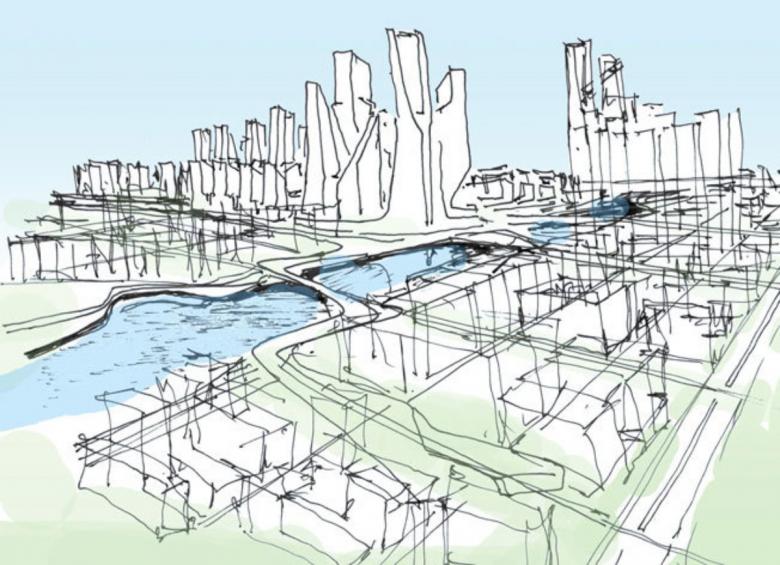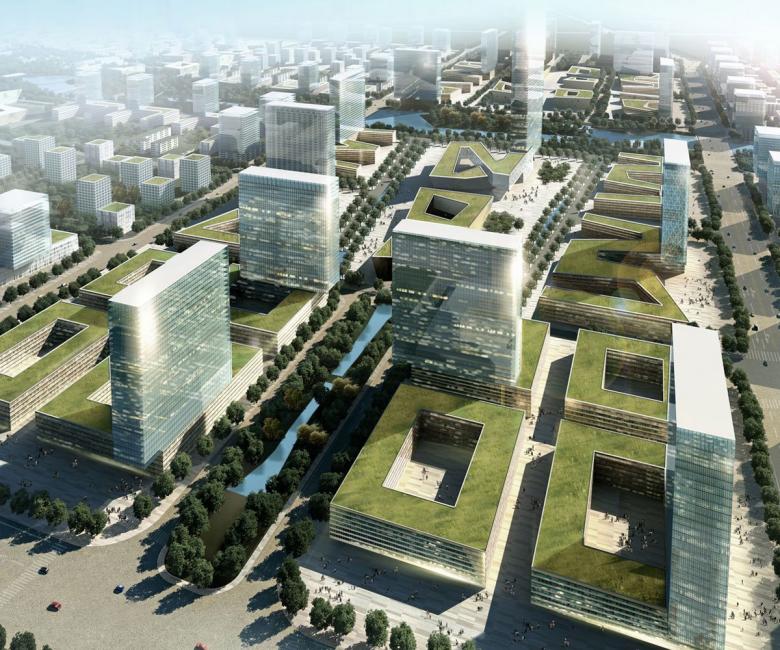Qingdao Science and Technology City
Qingdao, China
KSP Jürgen Engel Architekten International wins urban planning competition in Qingdao on the eastern coast of China
In the international competition for the Qingdao Science and Technology City the company’s design for the approx. 600-hectare site in the north of the port city won out against international participants from Japan and China.
In 2009, on account of its location by the water, its numerous rivers and canals, not to mention its lush vegetation, the port city of Qingdao, which translated literally means “green island”, was deemed to be the city with the highest quality of life in China. As the country’s third largest port, the economic and industrial center of Shandong Province, and with a population today of some 8.5 million, Qingdao experienced rapid development. Even in the 19th century Qingdao, also known as Tsingtao, was an important trading place for German merchants. Between 1897 and 1914 Qingdao was German leased territory, and the electricity grid, drinking water supply and drainage system date from this era, as do the now world famous Tsingtao brewery, a station, a Protestant church, and the Governor’s residence. Many of these buildings still exist today and are held in high regard.
The economic momentum of the past few years and the accompanying boom in construction have created the need for additional areas for development. The new planning area in the Jiao-Zhou district is intended primarily for service providers and high-tech companies, on top of which offices, commercial premises, and residential buildings for employees are to be constructed, not to mention public buildings, including several education centers for 100,000 inhabitants.
The design by KSP Jürgen Engel Architekten for the area is characterized by a compact center and four mixed-usage quarters (residential, work, shopping, leisure time). An approx. 125-hectare area of greenery extending along the river from north to south across the entire planning area forms the backbone of the new development. The compact urban center is concentrated in structure and will be brought to life through the businesses, restaurants, and cultural facilities in it. Prestigious high-rises that are visible from afar will mark the center. Furthermore, each quarter will also boast its own (district) center, which the inhabitants will be able to reach on foot, and which have all requisite facilities. Basic institutions, such as an international school, a hospital etc., will be located in one of the quarters but will be for the use of all inhabitants.
The urban planning concept defines living quarters for the various groups of inhabitants, e.g., less developed, so-called “city garden areas” for families and residential high-rises with studios and apartments for singles and working people. Generally speaking, medium-height buildings (five storeys), with flexible footprints and interior courtyards dominate. This form of development keeps things on a human scale while at the same time, through the concentration, enabling a certain urban flair.
The central park opens out to the south and north, with in the middle two boulevards intersecting it from east to west, connecting the new district with the rest of the city. In the north the Qingdao Science and Technology City will adjoin an existing highway, separated from it by the perimeter of the park.
Sustainable development planning with diverse facilities, the prioritization of pedestrian traffic and public transport, a rainwater collection and recycling system, not to mention architecture that is highly efficient in terms of energy and planned taking present-day sustainability criteria into consideration, create the requisite conditions for a green city worth living in. Different qualities with regard to open space such as the setting on the river, the park, as well as apartments and workplaces close to outdoor areas ensure a high quality of life in the new district.
Plot of land
600 hectares
GSA
6,200,000 sqm
Max. building height
100 m
Competition
July 2011, 1st prize
- Architects
- KSP ENGEL
- Year
- 2011
- Client
- Beijing Winland Real Estate Co Ltd & Local Government Jiao-Zhou/Shandong







